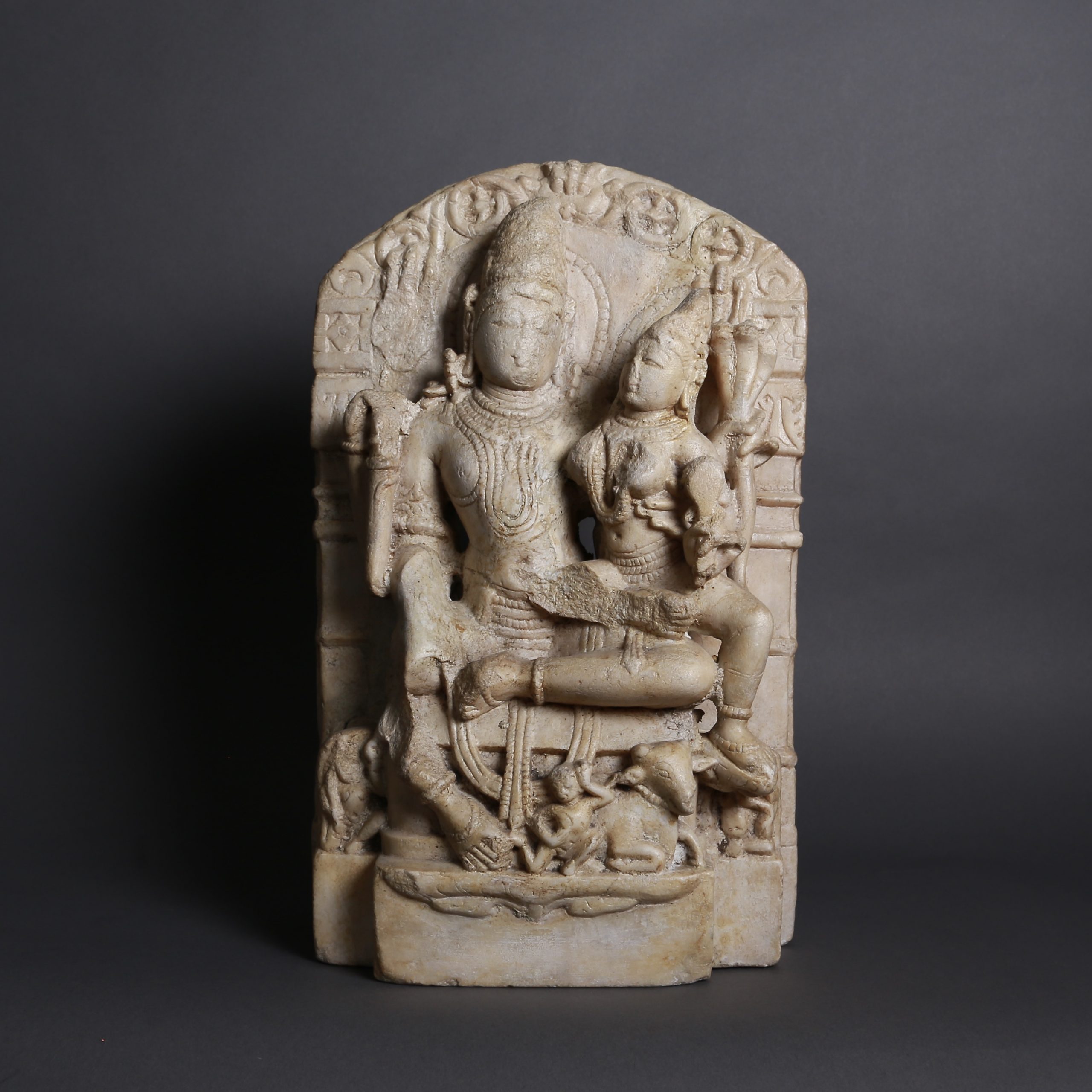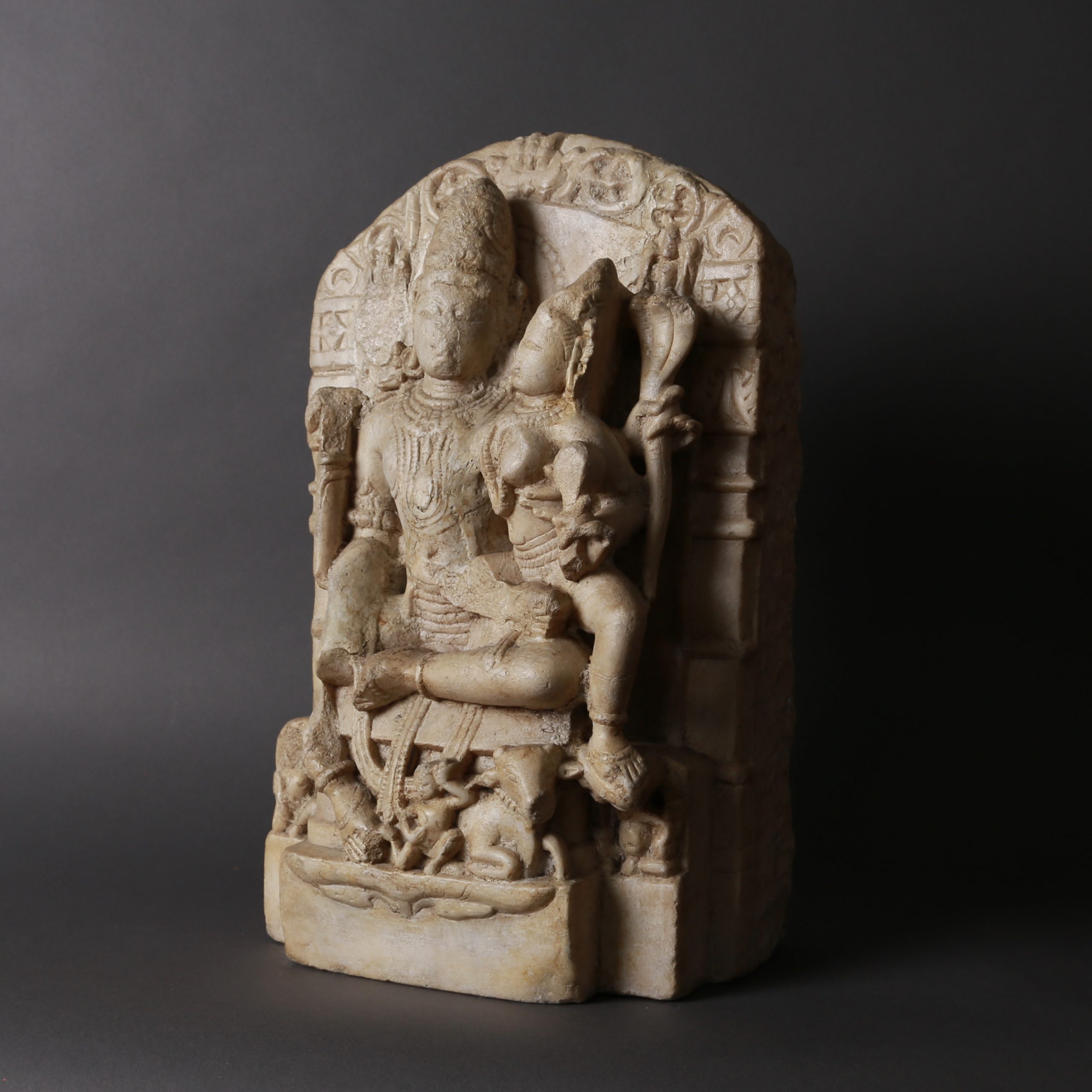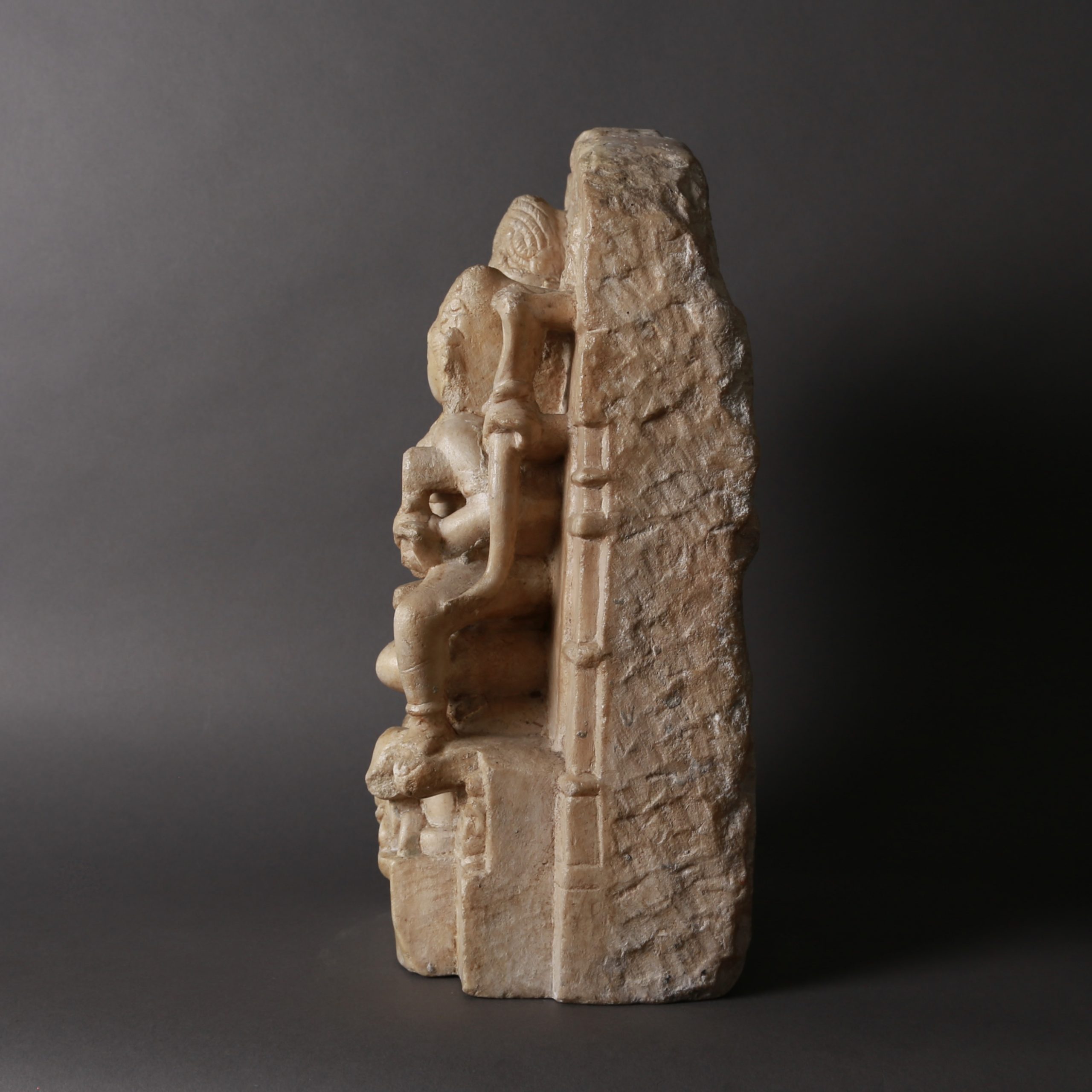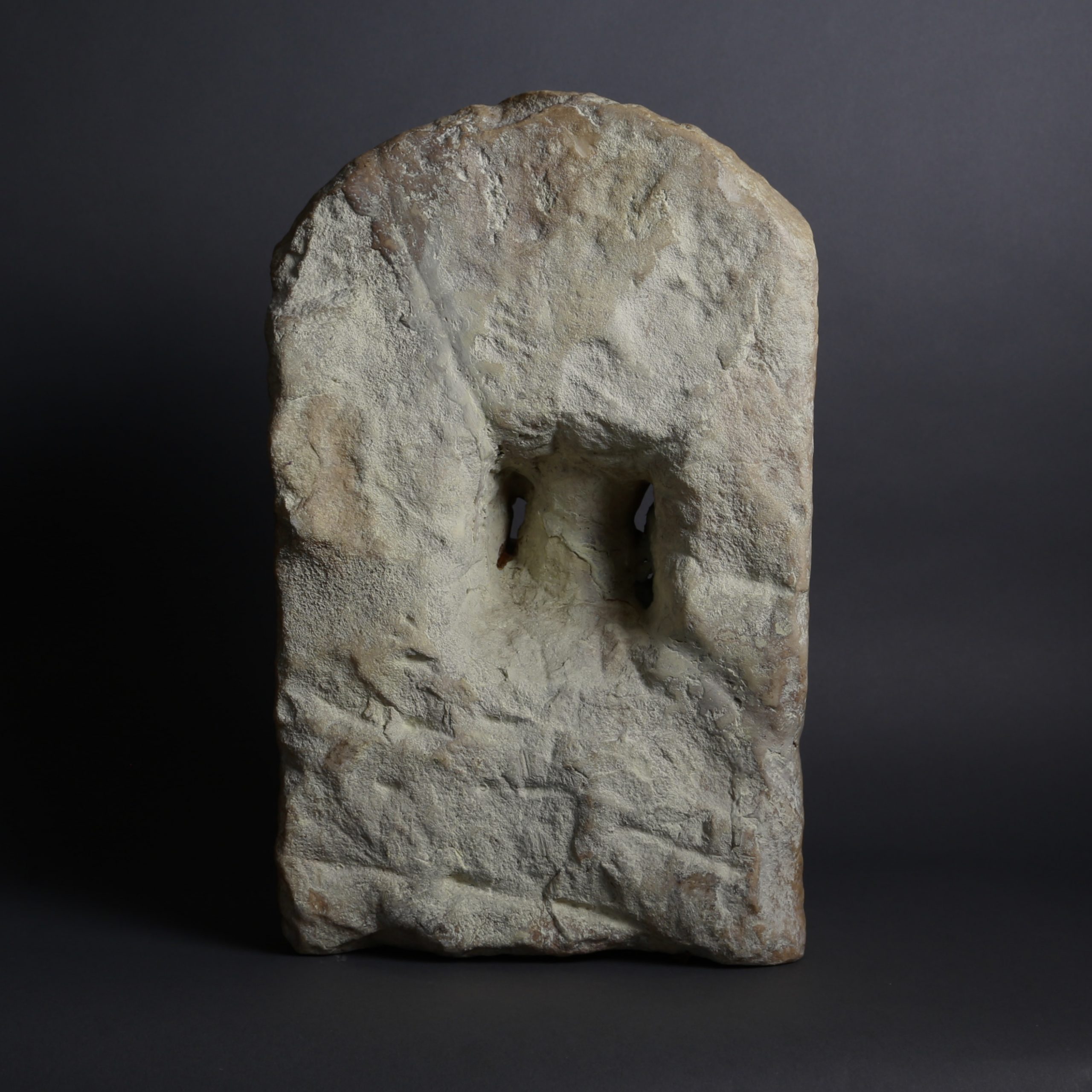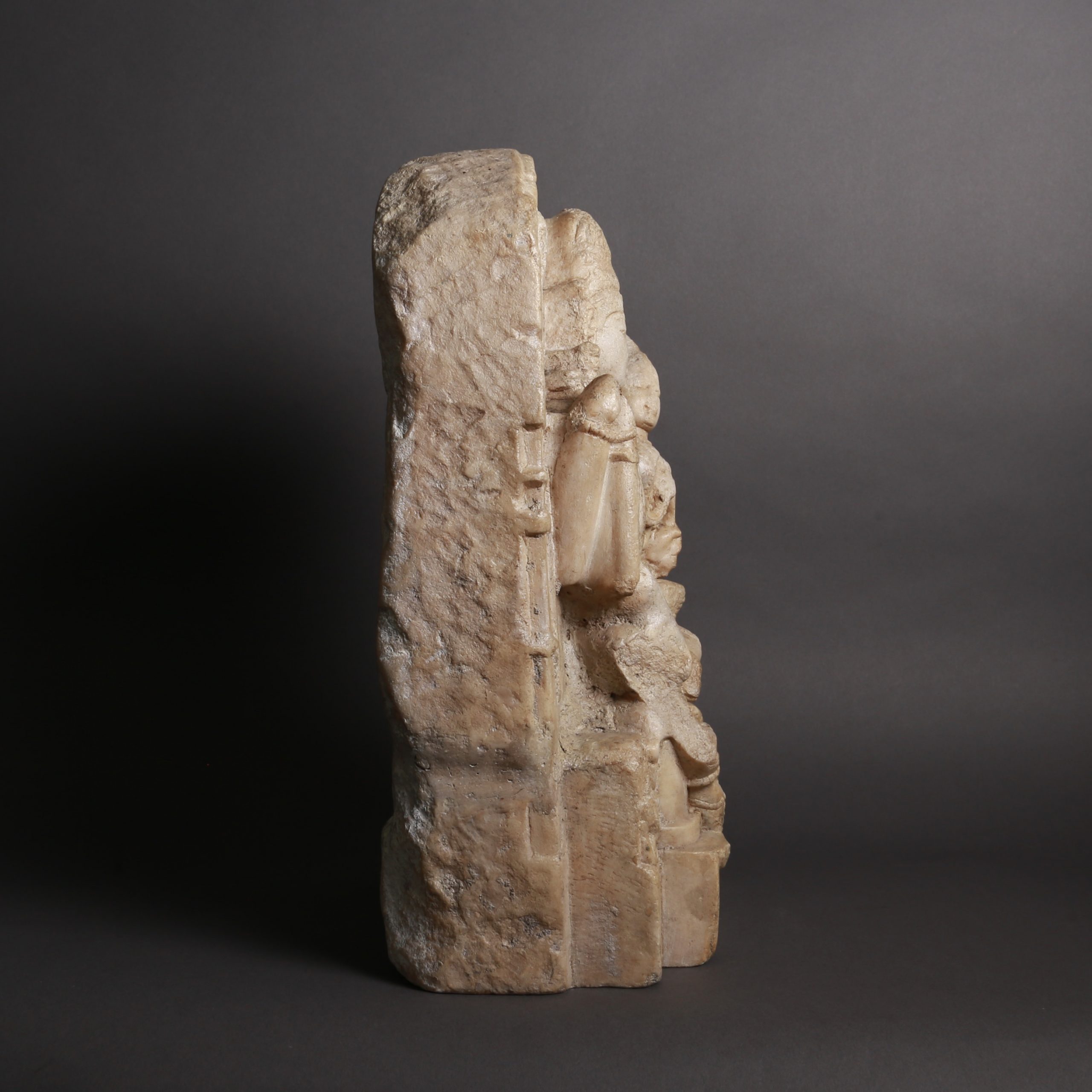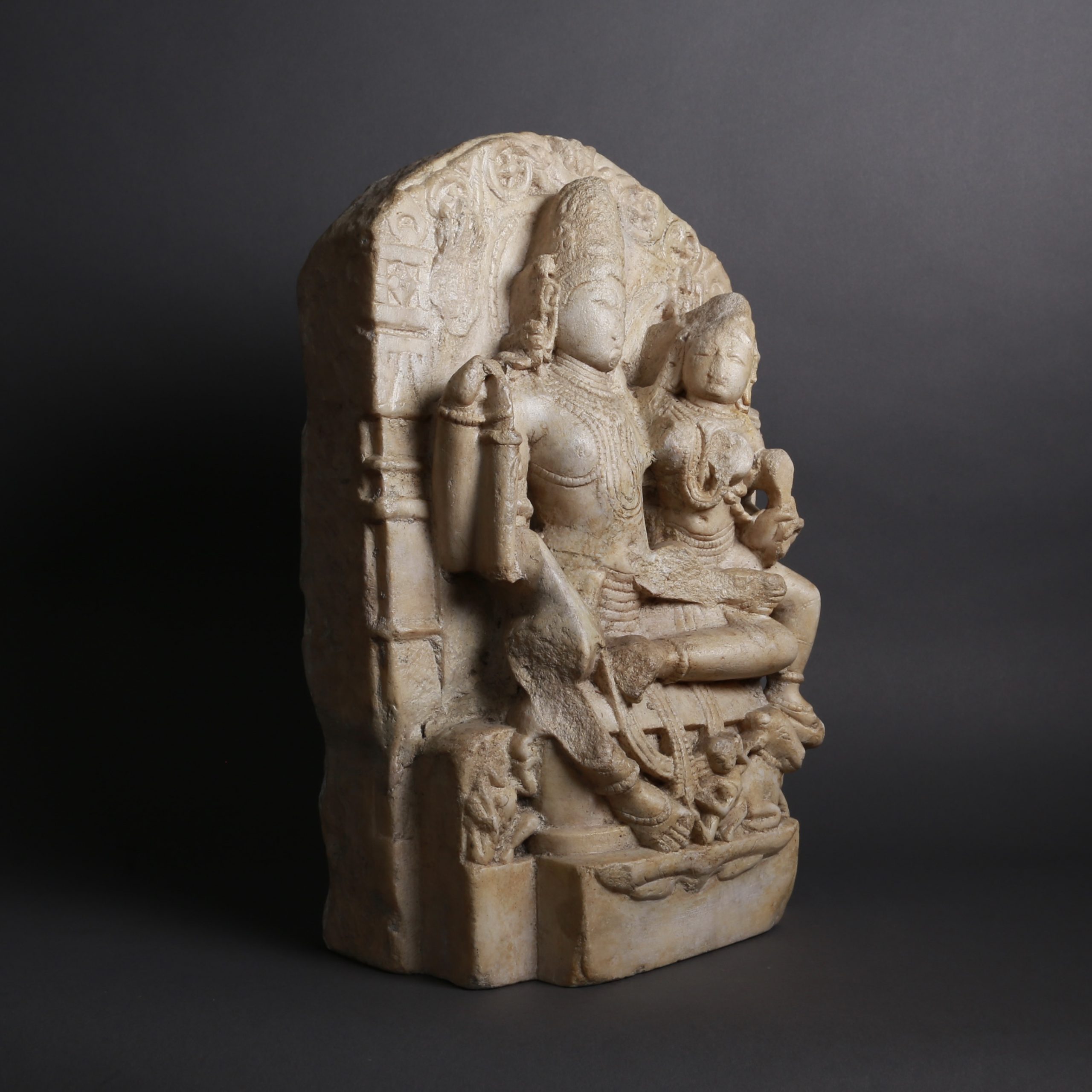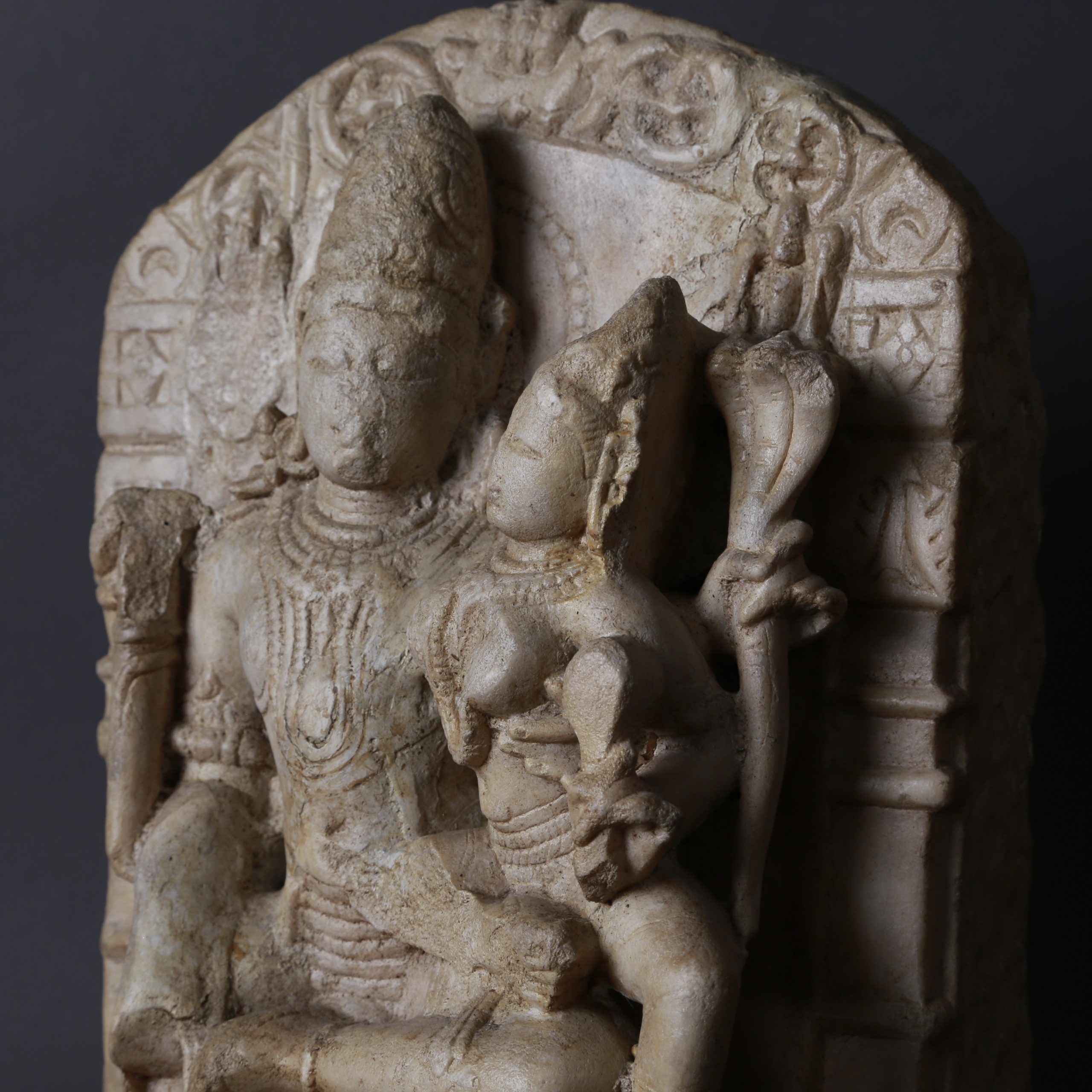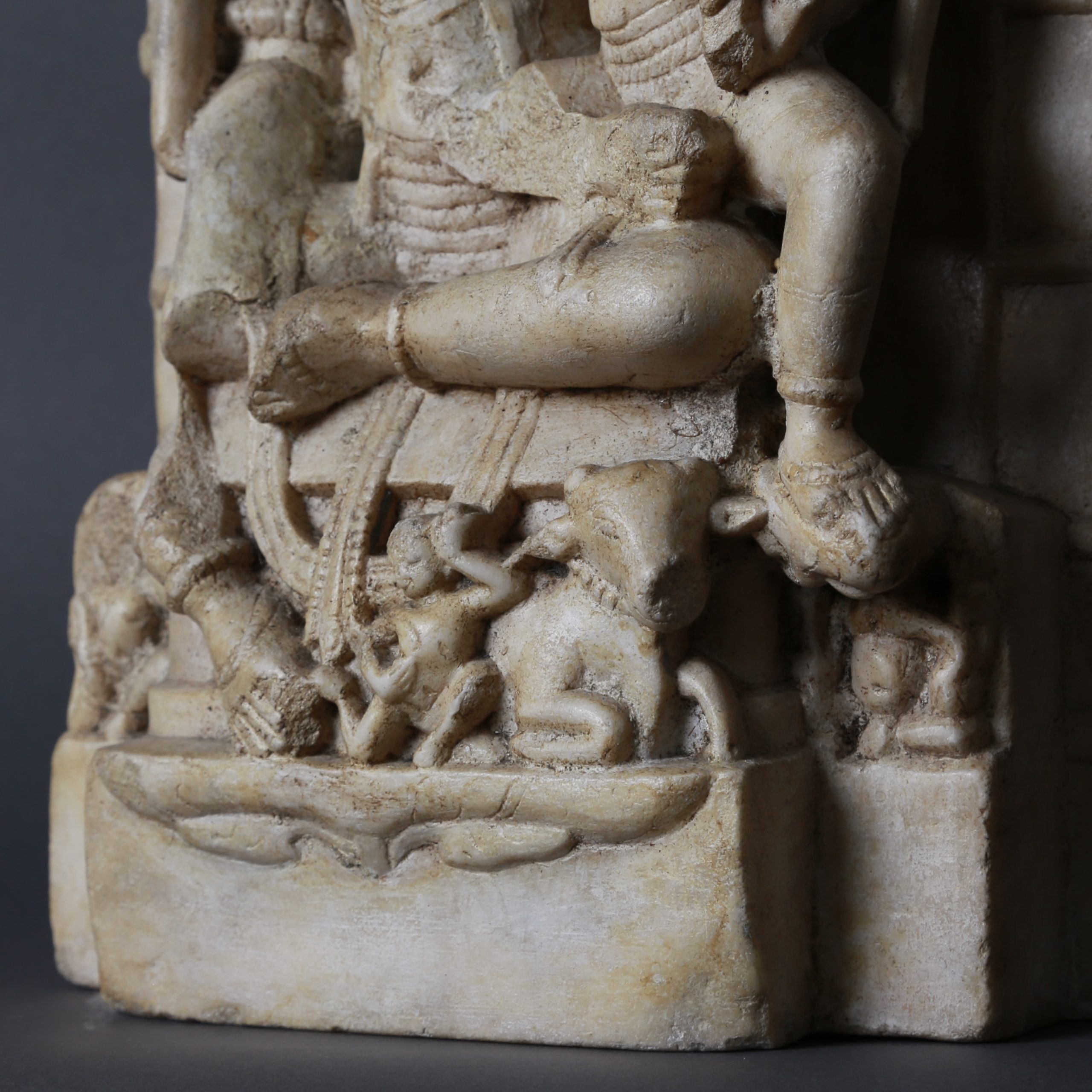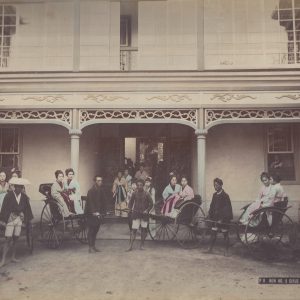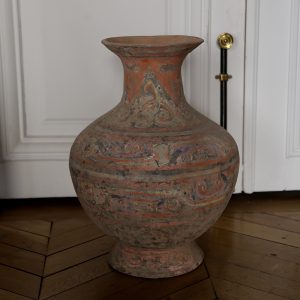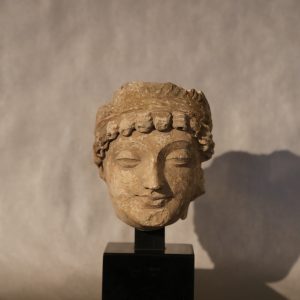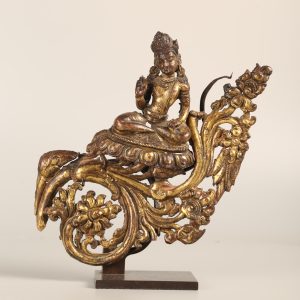Umāmaheśvara
Marble
Western India, Gujarāt ou Rājasthān
Circa 11th century
H. 38 cm or 15 in
Description
Original and sensual: two adjectives to describe this charming marble piece from Western India, from the region of Gujarāt or Rājasthān, and dating from the 11th century. Measuring 38 cm in height (or 15 in), this stele shows us a seductive iconography: the Hindu god Śiva lovingly embracing his wife.
This stele depicts the Hindu god Śiva in his Umāmahēśvaramūrti form: Śiva and his wife, called Umā, the “Favorable”, in this context, seated on the same throne and act tenderly towards each other. The god is seated in the relaxation posture (ardhaparyaṅka), his right leg resting on the edge of the stele and the left bent over the throne. His main attribute is the trident (triśūla), which he holds in one of his right hands, and the snake appears in his left hand. The goddess, sitting at his side in the inverted royal relaxation posture (mahārājalīlāsana), looks at him lovingly.
To the divine couple are traditionally added in this iconography their children and other characters. We are thus pleased to recognize in the center a dwarf (gaṇa) dancing to entertain the divine couple, and the buffalo Nandin, the god’s steed. Then, on the left corner, is probably another dwarf belonging to this troupe of dancers and musicians led by Gaṇeśa, son of Śiva and Umā, characterized by his elephant head and appearing here on the right.
In spite of some lacks, it is easy to appreciate the richness of the ornaments, their variety and profusion. The god wears his high ascetic’s bun, heavy earrings, multiple pearl necklaces and bracelets on his arms and ankles. Similar jewellery adorns the body of the goddess, dressed in a pleated dhoti.
Framing the couple, the throne has architectural uprights, while the top of the stele is adorned with the mask of kīrtimukha, a prophylactic decorative element. On both sides, geometric motifs are characteristic of stelae from these regions of Western India, appearing in both Hindu and Jain artworks.
Provenance: Private collection, Germany.

